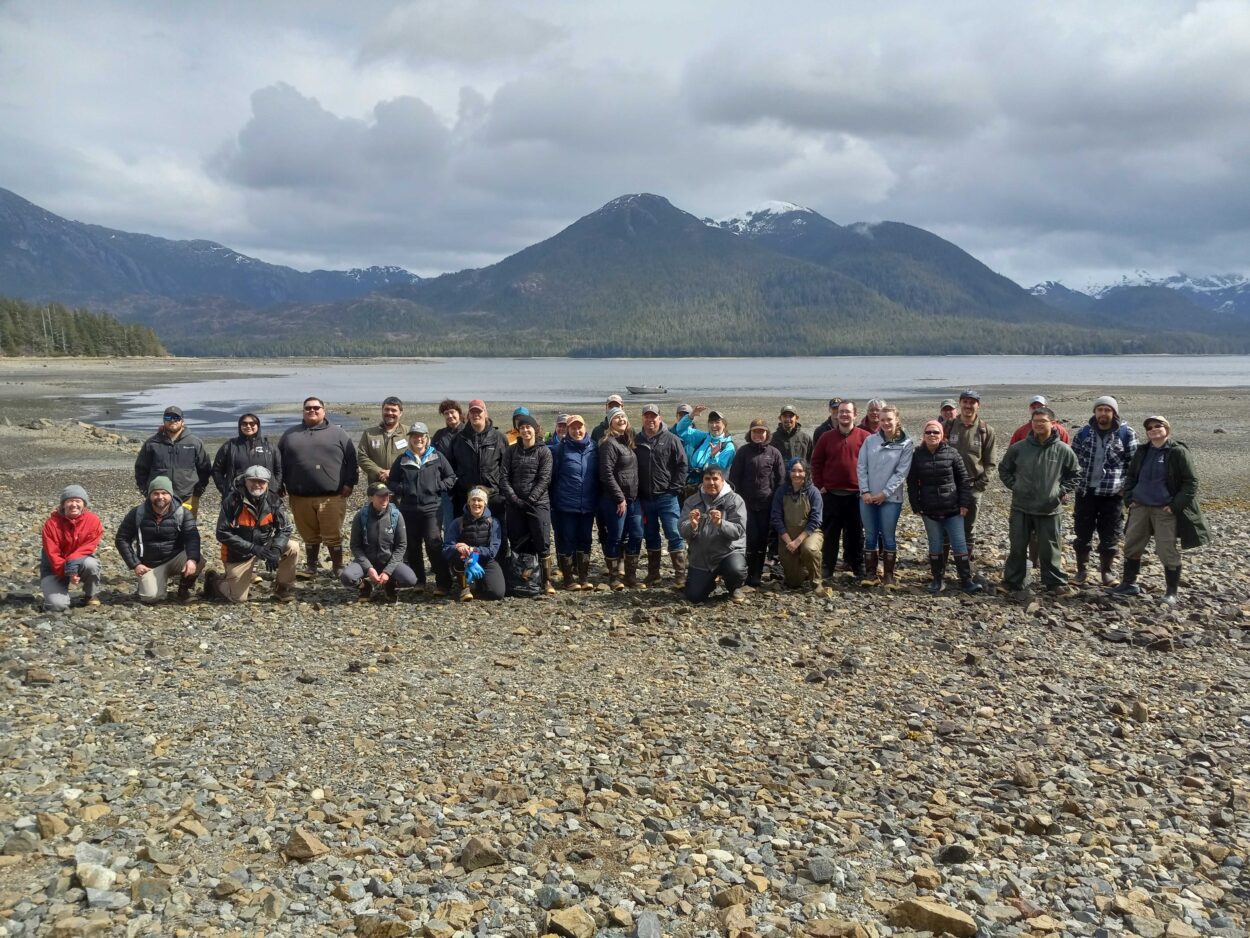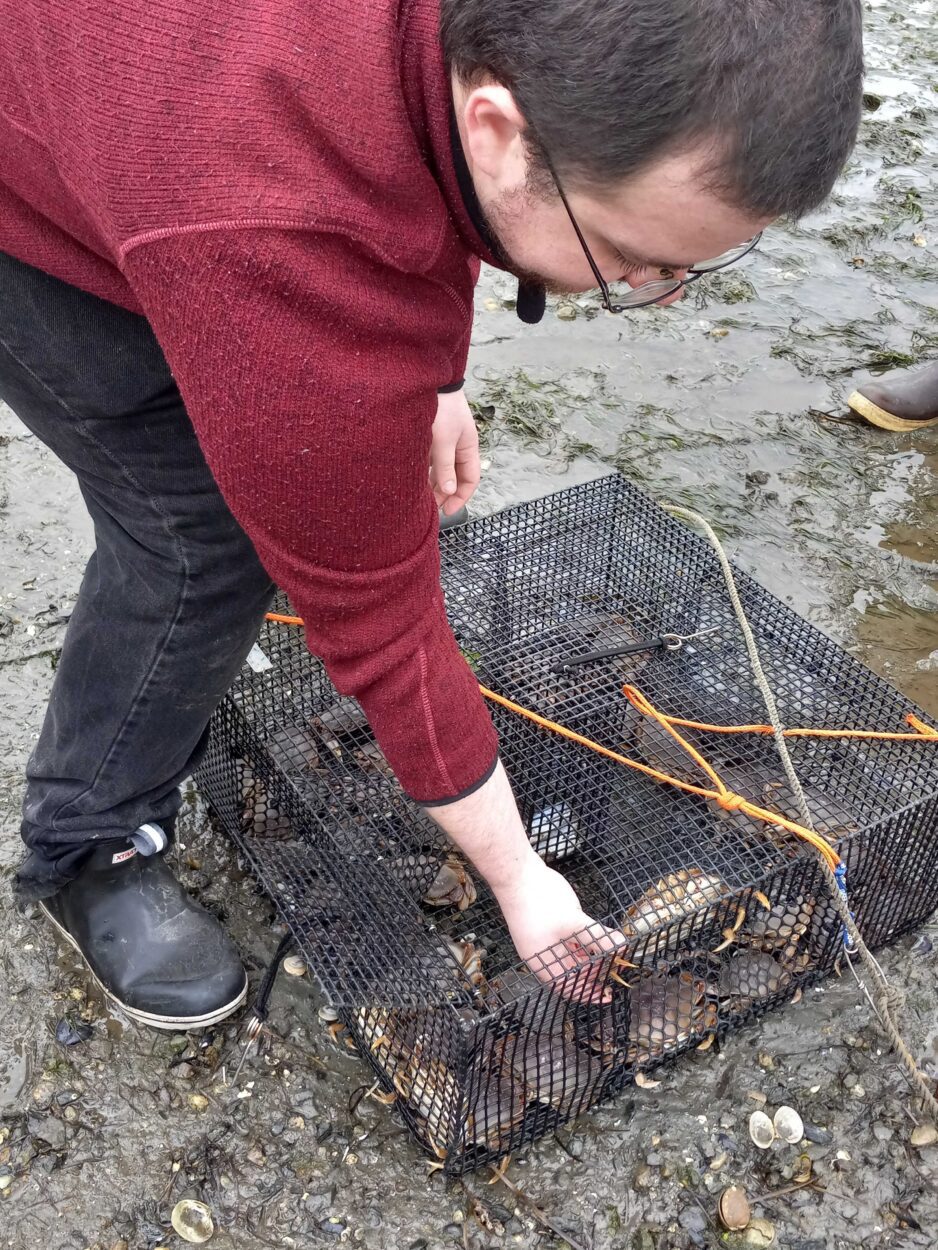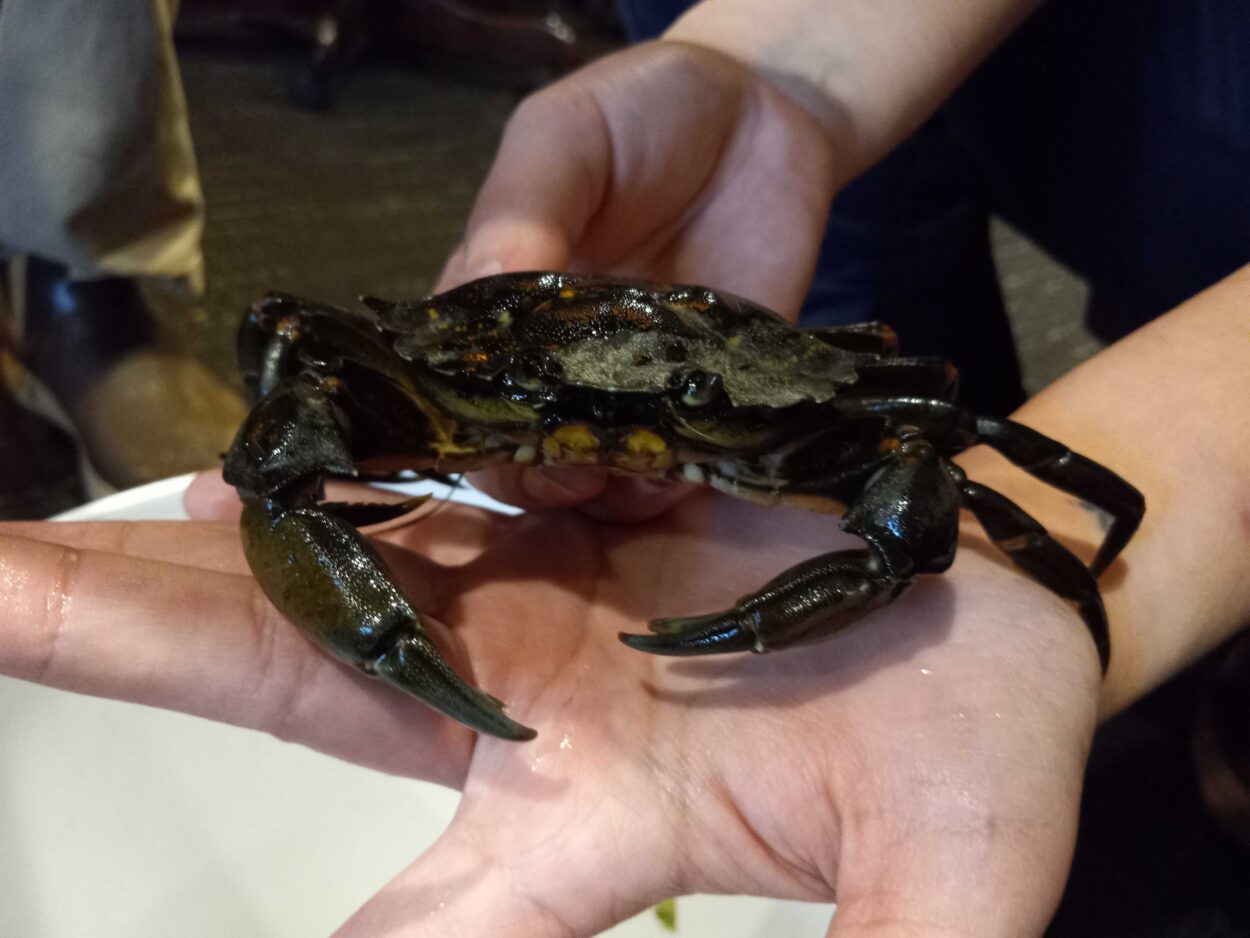
Invasive green crabs are in Alaska. And they are destructive, outcompeting native species and destroying essential eelgrass. At a workshop in Metlakatla last month, citizen scientists learned from experts how to look out for the invasive crabs in their own communities.
Scientists and concerned Alaskans are at Tamgas Harbor. Gathered near Colby Creek Beach, they’re getting a first hand look at the European green crab. And time is of the essence. The crabs showed up in southern Southeast Alaska last summer, and more than 800 have been found since.
“It’s like we hit the ground running coming out here,” said Taylor Stumpf, with the wildlife department of Metlakatla’s tribe. He’s helping people learn to identify, measure, and document the crabs.

The workshop drew participants from around the region, including Ketchikan, Kake and Prince of Wales Island. Green crabs have already infested waters around Haida Gwaii, California and Washington. But for now, Metlakatla is the only place in Alaska to document live green crabs — which are destroying vital eelgrass and habitat for abalone, clams and Dungeness crabs.
But that doesn’t mean they won’t spread. That’s why the workshop — which was organized by local, state, federal and tribal agencies — focused on training people to identify the crabs and alert authorities before it’s too late to control the spread.
People aren’t allowed to kill the crabs themselves — officials are worried they’ll mix up species and take out a perfectly good Dungie — but they are encouraged to collect information and alert authorities. That’s what the workshop is teaching them to do. The agencies organizing the workshop included Alaska Sea Grant, Washington Sea Grant and the National Oceanic and Atmospheric Association. Other involved agencies included the Central Council of the Tlingit and Haida Indian Tribes of Alaska and representatives from the U.S. Coast Guard. Participants included area mayors, concerned citizens, scientists and more.
Stumpf explained a few key tells for a crab that doesn’t belong. Wildlife officials also handed out laminated guides showing pictures of the green crab to all the participants.
“They have the five spines on either side of the eyes and then the three bumps in the middle,” he said. “So we’ve been teaching people with guides how to identify the crabs.”

Ewa Booth is showing people how to set and bait different kinds of traps. She’s an intern with Metlakatla’s wildlife department. She said the Tribe has been experimenting with what works best.
“They usually like chum and herring fish,” Booth said. “We haven’t really used cat food like they suggested.”
Booth said she’s noticed a difference on the beach since the first crab was found last year.
“Eelgrass is important because it’s like habitat for other clams, and like juvenile fish, juvenile salmon,” Booth explained. “So it was kind of a worry for us when they first arrived. And I’ve noticed that they’ve gotten a lot shorter, too, like, the eelgrass.”
Booth noted that the crabs tear up the eelgrass while they’re looking for food.
There’s no sure-fire way to eradicate the crabs once they’ve arrived. Tribal nations in Washington state have been fighting them for years. But Genelle Winter, Metlakatla’s grant and invasive species coordinator, said the key is to just keep finding them. She said Metlakatla has always protected its resources, and that’s what the town will keep doing.
“It just sharpened everybody’s need or awareness to protect those resources, right?” Winter said. “Like those resources were already super precious. It’s wanting to make sure they stay intact.”
Each female crab is capable of laying hundreds of eggs. In Metlakatla, green crab catching is a full day’s work. Just ask Gabriel Nathan.
“We’ve been catching a lot when they were molting, when they’re trying to hatch eggs and everything,” he said. “And we caught like over, probably, 40 green crab with egg shells attached to them. And that slowed down a lot. So it was great.”
The workshop’s message is also one of hope: if everyone learns to spot these crabs maybe there’s a way to protect other communities.
Tre Patterson, with Metlakatla’s wildlife department, said that’s the goal.
“I didn’t think that the state or other places near us were taking it as seriously as we wer,” he said. “So to see something like this happening today here on the island is great, to see that more people are taking this issue seriously.
Patterson said everyone has a stake in stopping the crabs — and that things will get even worse if the crabs keep moving north.
Raegan Miller is a Report for America corps member for KRBD. Your donation to match our RFA grant helps keep her writing stories like this one. Please consider making a tax-deductible contribution at KRBD.org/donate.





